Brazil still has a way to go on the road to reform
by Vivienne Taberer,
2014-06-03 05:56:09.0
IN THE run-up to the Soccer World Cup, the world’s focus is not just on the competition, but on the broader issues that are part of Brazil this year: a presidential election, higher inflation and lower growth than is ideal, and some of the driest weather on record.
While President Dilma Rousseff remains the favourite to win the presidential election, the players on the ground like the idea of a closer election and a political outcome that would push the agenda towards one they perceive as more market friendly. Across the entire political spectrum, though, there is plainly a focus on what needs to be done to raise investment and increase potential growth levels. The message is clear: spending on infrastructure needs to be a priority. The population is pressing hard for better roads, hospitals and education.
The continuing protests going into the World Cup emphasise this point. While soccer fever will no doubt overtake the Brazilian people when the competition begins, roads and airports are creaking under the strain of systems that desperately need upgrading.
Discussions with the finance ministry and the state-owned Brazilian Development Bank highlighted both the progress and how much has yet to be achieved. Although limited in terms of the actual projects completed, the improvement in the concession auctions implies that a marked acceleration is expected. While there is a clear push for more private-sector involvement in a lot of these projects, it is painfully obvious that certain projects will have to remain the domain of the government, even though the present model of financing through the state-owned banks is not optimal.
Government officials are keen to point out where progress has been made, in contrast to the market, where the emphasis is on the government’s shortcomings. The need for reform is acknowledged from all quarters, but the reality of the Brazilian system is that significant reform is difficult to achieve. The present approach of piecemeal measures that can be done by decree, rather than facing the difficulties of pushing something more substantial through Congress, will remain in place at least until the election.
Opinion is divided on the strength of the post-election reform agenda. The polls suggest Rousseff is likely to win a second term. Therefore, the question, as one economic consultant put it, is "which Dilma will we get? The one who embraced Castro, or the one that went to Davos?" The appointment of the next finance minister will be key in answering this question.
Not surprisingly, with economic forecasts for this year consistently seeing downward revisions to growth and inflation expectations edging up, there is huge concern about the drought and the low levels of reservoirs in a country where power generation is largely hydroelectric. Private-sector analysts have been highlighting the increasing risks of power rationing. The government, on the other hand, is quick to say that the issue is not one of capacity, but rather of price.
The reality is somewhere in between. If it does not rain heavily soon, the prospect of power rationing will become more probable. In fact, some districts are already on water rationing. Widespread rationing would have a knock-on negative effect on an economy struggling with insipid growth. While meetings with the government made it clear they will try to limit the effects on all fronts, it is clear they do not have much room to manoeuvre.
My key takeaway from my time spent in Brazil is probably a bit more optimistic than the paragraphs above might suggest. Debate around the issues is vigorous. The government realises what the challenges are. The social fabric is one that is likely to drive change. The Brazilian population has seen its middle class explode in the past 20 years and is increasingly demanding that its government deliver. Progress has been slow, but there has been progress. Rousseff, or whoever may next be at the helm, will need to focus on these challenges and help Brazil achieve at least some of its huge potential.
How does this view translate into investment opportunities over the shorter term? The Brazilian authorities have helped to strengthen the exchange rate in a bid to contain inflation and raised interest rates sharply. This means that, despite the high carry rates, the currency looks expensive. On local bonds, however, the exceptionally high real rates, against a backdrop of a relatively steep curve where the market is pricing in even higher short-term rates, look like good value.
• Taberer is portfolio manager: emerging markets fixed income at Investec Asset Management.
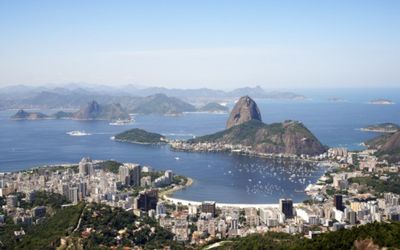
Rio de Janeiro, Brazil. Picture: THINKSTOCK
IN THE run-up to the Soccer World Cup, the world’s focus is not just on the competition, but on the broader issues that are part of Brazil this year: a presidential election, higher inflation and lower growth than is ideal, and some of the driest weather on record.
While President Dilma Rousseff remains the favourite to win the presidential election, the players on the ground like the idea of a closer election and a political outcome that would push the agenda towards one they perceive as more market friendly. Across the entire political spectrum, though, there is plainly a focus on what needs to be done to raise investment and increase potential growth levels. The message is clear: spending on infrastructure needs to be a priority. The population is pressing hard for better roads, hospitals and education.
The continuing protests going into the World Cup emphasise this point. While soccer fever will no doubt overtake the Brazilian people when the competition begins, roads and airports are creaking under the strain of systems that desperately need upgrading.
Discussions with the finance ministry and the state-owned Brazilian Development Bank highlighted both the progress and how much has yet to be achieved. Although limited in terms of the actual projects completed, the improvement in the concession auctions implies that a marked acceleration is expected. While there is a clear push for more private-sector involvement in a lot of these projects, it is painfully obvious that certain projects will have to remain the domain of the government, even though the present model of financing through the state-owned banks is not optimal.
Government officials are keen to point out where progress has been made, in contrast to the market, where the emphasis is on the government’s shortcomings. The need for reform is acknowledged from all quarters, but the reality of the Brazilian system is that significant reform is difficult to achieve. The present approach of piecemeal measures that can be done by decree, rather than facing the difficulties of pushing something more substantial through Congress, will remain in place at least until the election.
Opinion is divided on the strength of the post-election reform agenda. The polls suggest Rousseff is likely to win a second term. Therefore, the question, as one economic consultant put it, is "which Dilma will we get? The one who embraced Castro, or the one that went to Davos?" The appointment of the next finance minister will be key in answering this question.
Not surprisingly, with economic forecasts for this year consistently seeing downward revisions to growth and inflation expectations edging up, there is huge concern about the drought and the low levels of reservoirs in a country where power generation is largely hydroelectric. Private-sector analysts have been highlighting the increasing risks of power rationing. The government, on the other hand, is quick to say that the issue is not one of capacity, but rather of price.
The reality is somewhere in between. If it does not rain heavily soon, the prospect of power rationing will become more probable. In fact, some districts are already on water rationing. Widespread rationing would have a knock-on negative effect on an economy struggling with insipid growth. While meetings with the government made it clear they will try to limit the effects on all fronts, it is clear they do not have much room to manoeuvre.
My key takeaway from my time spent in Brazil is probably a bit more optimistic than the paragraphs above might suggest. Debate around the issues is vigorous. The government realises what the challenges are. The social fabric is one that is likely to drive change. The Brazilian population has seen its middle class explode in the past 20 years and is increasingly demanding that its government deliver. Progress has been slow, but there has been progress. Rousseff, or whoever may next be at the helm, will need to focus on these challenges and help Brazil achieve at least some of its huge potential.
How does this view translate into investment opportunities over the shorter term? The Brazilian authorities have helped to strengthen the exchange rate in a bid to contain inflation and raised interest rates sharply. This means that, despite the high carry rates, the currency looks expensive. On local bonds, however, the exceptionally high real rates, against a backdrop of a relatively steep curve where the market is pricing in even higher short-term rates, look like good value.
• Taberer is portfolio manager: emerging markets fixed income at Investec Asset Management.


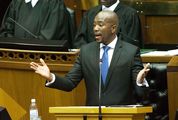

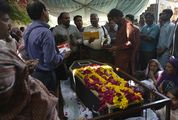



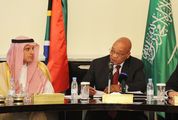
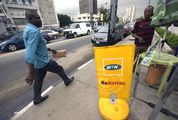





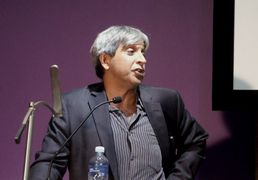







Change: -0.47%
Change: -0.57%
Change: -1.76%
Change: -0.34%
Change: 0.02%
Data supplied by Profile Data
Change: -1.49%
Change: -0.04%
Change: -0.47%
Change: 0.00%
Change: 0.08%
Data supplied by Profile Data
Change: 0.16%
Change: 0.61%
Change: 0.12%
Change: -0.29%
Change: 0.82%
Data supplied by Profile Data
Change: 0.21%
Change: -0.42%
Change: 0.20%
Change: -1.22%
Change: -0.96%
Data supplied by Profile Data